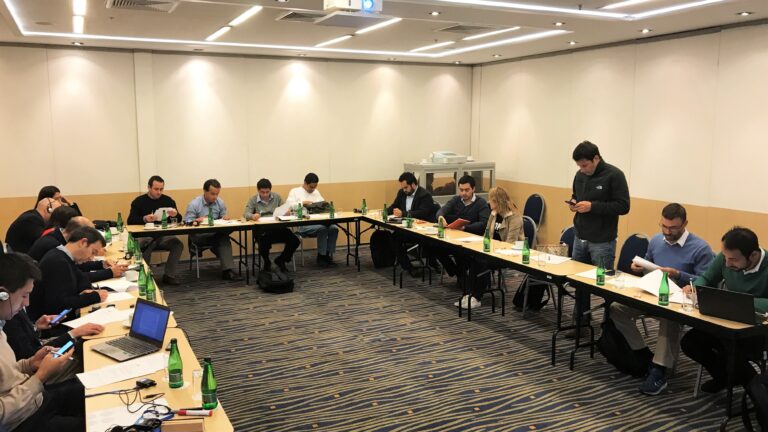
FTP Workshop – Santiago – Nov 2018
Thanks to the large group of delegates from Colombia and Chile who attended my FTP workshop in Santiago. Once more, I observed that bankers in Central and South America are much more aware of the necessity for FTP for effective risk and earnings management; unlike many of their counterparts in the US and Europe, they recognize that interest rate risk and liquidity risk are material drivers of earnings.
Because these countries have more volatile interest rates and liquidity spreads, the necessity for FTP is undeniable; if risk-related earnings are mis-attributed to lending and deposit products, business strategies and capital allocation may not be just sub-optimal, they may be fatal.
Despite the awareness though, most participants noted the ever-present challenge of getting management to acknowledge the necessity of computing economically-robust measures of product profitability which correctly reflect contemporaneous hedging costs. At many of their organizations, it is not unusual for FTP rates to be manipulated to make products appear profitable or to force mismatch center earnings to be zero (to be fair, such practices are common around the world at banks and credit unions of all sizes). While it’s one thing to understand that FTP is necessary; it’s another thing entirely to understand how FTP rates must be computed for spreads be meaningful.
In the workshop, we referred to the difference between management by TRUTH and management by FICTION. Regulators and board members would be wise to ensure that risk and profitability management policies compel management to employ methodologies which have economic integrity.
We also discussed risk and profitability measures which require explicit behavioral assumptions around NMDs. I then presented my approach for quantifying deposit behaviors which ensures that key risk and profitability management measures are fed with a common set of behavioral assumptions; this is accomplished by an FTP rate calculator which is integrated directly into the behavioral model. FTP rates are computed using the same re-pricing and liquidity cash flows which are used to feed the ALM model, and in addition to providing historical and pro forma FTP rates for each product, any behavioral changes which result in model re-calibration produce a logically consistent change in FTP rates and FTP rate dynamics.
Thanks again to the entire group and translators who made this workshop a huge success. It is always an honor to be invited to another country to share my views on this fascinating subject.
For more information about our workshops, including executive management sessions, see www.davidgreenadvisors.com/workshops.

